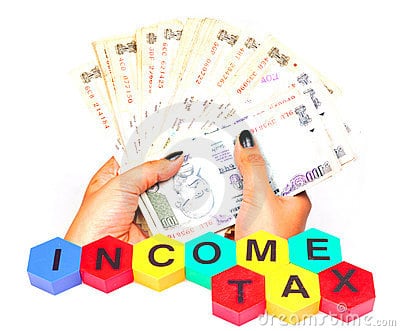Time for some mathematics ! And if it weren’t your favorite subject in school, don’t be afraid to read on. The formula is pretty self explanatory.
Financial planning is all about leaning new things and how to calculate post-tax returns on your investments is very crucial for you to understand so that you know exactly what returns the product is actually generating for you.
We will learn to calculate the actual returns your investment gives you after you have paid tax on it. For the uninitiated, you need to pay tax to the government of India for most of the investments you do today. So if you were to buy into a Fixed Deposit of say, 9% per annum, at the end of the year when you have pocketed your 9%, you still need to pay tax on it. That reduces your overall return to less than 9% !!
Example 1
Let us take an example. Given below are the rate of returns, before you pay tax on the returns from them after they have matured, of some products in India. Lets us calculate the post tax return for these.
| Product | Pre-Tax Return |
| Fixed Deposits (FD) | 8.00% |
| Senior Citizen Saving Scheme (SCSS) | 9.00% |
| National Saving Certificate (NSC) | 8.00% |
| Post Office Monthly Income Scheme (POMIS) | 8.00% |
Let us further assume that the calculation is done for the investor who happens to be in the highest tax bracket.
The formula is :
Post tax returns = R – ( R * TR %) where
R = rate of return on the investment
TR% = Tax bracket (in percentage) of investor.
So for an FD of 8%, Post tax return = 8 – ( 8 * 30.9/100) = 5.528%. For a person paying tax in the highest tax bracket, the rate of tax is 30.9%. What this means is that had you invested into a FD thinking you were going to get 8% returns, actually the returns would be 5.528% if you were into the highest tax bracket.
Quite a letdown, I know. And that is why it makes sense to compare post tax returns of investments to justify which one was better for you.
Example 2
Let us calculate for SCSS.
Post tax return = 9 – (9*30.9/100) = 6.219 %. So a senior citizen falling in the highest tax bracket does not get 9% from the Senior Citizen Saving Scheme – he gets 6.219 %. Quite a let down again I guess.
The below figure shows the actual post tax returns for the above products for an investor in the highest tax bracket.
| Product | Pre-Tax Return | Post-Tax Return |
| Fixed Deposits (FD) | 8.00% | 5.528% |
| Senior Citizen Saving Scheme (SCSS) | 9.00% | 6.219% |
| National Saving Certificate (NSC) | 8.00% | 5.528% |
| Post Office Monthly Income Scheme (POMIS) | 8.00% | 5.528% |
For an investor in the lowest tax bracket. tax rate being 10.30%, the returns will look like below :
| Product | Pre-Tax Return | Post-Tax Return |
| Fixed Deposits (FD) | 8.00% | 7.176% |
| Senior Citizen Saving Scheme (SCSS) | 9.00% | 8.073% |
| National Saving Certificate (NSC) | 8.00% | 7.176% |
| Post Office Monthly Income Scheme (POMIS) | 8.00% | 7.176% |
As you can observe, your actual returns dip significantly after you pay tax to the government.
Its wise to calculate post-tax returns of products and compare whether the investment is wise. It must also be noted that this can only be applied to products which are taxable – so you could not apply the same to Public Provident Fund (PPF) as the returns are not taxed for anyone, irrespective of which tax bracket he falls in.
Click here to use the calculator to ascertain your actual returns.









Excellent article and the tool. After a long google search I find a proper info at your site. Many people did not aware of this tiny info which impacts a huge in the income earned. Thanks!
@Thangavel P N, Glad you liked it.
Sir, Great Article and beautifully articulated. A layman can understand. I would request you to please publish this type of articles on Accounting Ratios, IRR, NPV other financial jargon with simple example. This would be more beneficial for the non-finance professionals as well as student community pursuing finance discipline as their career.
Hi…thanx for appreciating and suggesting more topics… have made a note of your topics and will write soon on these… thanx again…
A common issue, very well articulated. Thank you for sharing in a simple and easy to understand manner. Request you to expand the ‘does not apply’ to PPF to cover recent Tax free bond issues. Also, will be nice to know, about the same being tradeable too. The bond returns are tax free, however, if sold before maturity in market, is that a capital gain? Regards.